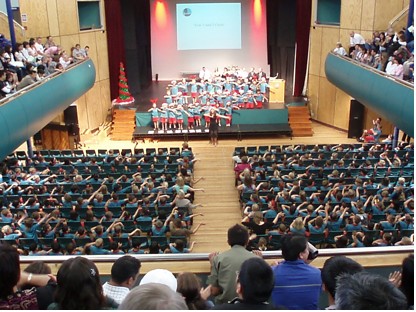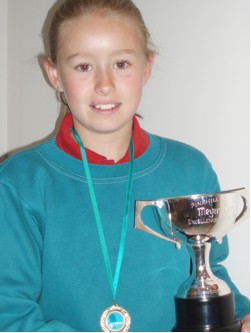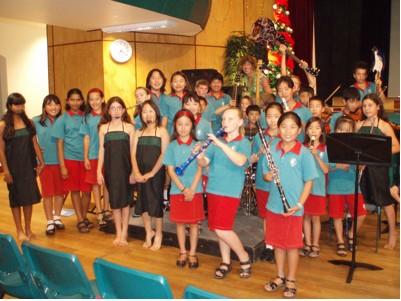The Pinehill Way
THE PINEHILL WAY - PASSION, PHILOSOPHY AND PURPOSE
This page and the ones following are the result of an assignment I was required to complete through Massey University in New Zealand. We had to create a resource that addresses a controversial issue or problem with a human rights issue. It is designed to promote active learning for understanding and critical citizenship. This teaching resource is based around:
Pinehill School’s Success at Building Global Citizens For the 21st Century
Introduction Pinehill School opened in February 1997 on Auckland’s North Shore, with a roll of 117 pupils. Immediately the school was noticeably different from other surrounding Primary schools. The hierarchal system was different. There were no Deputy Principal and Assistant Principals. They were all Associate Principals. The school was not separated into junior, middle and senior blocks. All classes/age groups were mixed up within four designated blocks of classrooms. This gave the school a unique family feel to it. Nobody was above anybody else.
Colour consultants were employed to create a colour scheme that was child friendly. The uniform colours also reflected this.
The Pinehill Way became a developed ideology within the school as it grew and developed – unique to Pinehill School.
By 2008 the roll had grown to over 550 pupils. Pinehill School now (2009) has a team of over 40 teachers and support staff who all take great pride in providing the best quality-learning environments for their students. The school site consists of 23 teaching classrooms, specialist music, ESOL, ICT and art rooms, a number of withdrawal teaching spaces, 3 playgrounds plus sandpit, comprehensive PE shed/equipment and a hall fully equipped with sound and lighting facilities.
Pinehill School provides a wide range of cultural and sporting opportunities for children at all levels. Netball, T ball, miniball and hockey are all played on a regular competitive basis with other sports provided for field days etc. They have active choirs, Kapa Haka and musical groups in the school. Each year they also have either a production or music festival with an art exhibition to give not only every child, but also their talented students opportunities to extend and present their learning in these areas.
The Pinehill Way – How did it evolve?
The Pinehill Way has developed over the history of Pinehill. What started, as an off-handed comment in the staffroom from its beginnings in 1997 is now a critical part of the culture of the school.
It is the shared beliefs of staff, students and our community about the expectations they have for the social interactions they engage in as part of the day-to-day operations of the school, which in turn produces global citizens of the future. Pinehill Way – Does it fit with the New Zealand Curriculum?
The Pinehill Way fits perfectly with the New Zealand curriculum. It encompasses the curriculum’s vision – building ‘confident, connected, actively involved, lifelong learners’, as discussed in the Principles section – the foundations of curriculum decision-making. The Values and Key Competencies section of the New Zealand curriculum further shows how ‘The Pinehill Way’ marries the criteria set; “Values are deeply held beliefs about what is important or desirable. They are expressed through the ways in which people think and act” ........ “They should be evident in the school’s philosophy, structures, curriculum, classrooms, and relationships. When the school community has developed strongly held and clearly articulated values, those values are likely to be expressed in everyday actions and interactions within the school” (Ministry of Education, 2007, p.10).
The Key Competencies focus on developing “capabilities for living and lifelong learning. The five key competencies are:
• Thinking = using creative, critical and meta-cognitive processes to make sense of information, experiences and ideas. How do I use an ‘I’ statement when upset with an action by another?
• Using Language, Symbols and Texts = working with and making meaning of the codes in which knowledge is expressed. How do I best show, tell or describe what I want to happen?
• Managing Self = associated with self-motivation, a ‘can-do’ attitude and with students seeing themselves as capable learners. Feeling proud as a member of a special group, having sound self-efficacy; knowing how to act in a variety of challenging situations.
• Relating to others = interacting effectively with a diverse range of people in a variety of contexts. This competency includes the ability to listen actively, recognise different points of view, negotiate and share ideas. Having base rules and clear instruction of how to use 'I' statements and methods of dealing with situations as they arise, inside and outside of the classroom.
• Participating and Contributing = being actively involved in communities. This competency includes a capacity to contribute appropriately as a group member, to make connections with others and to create opportunities for others in the group” (Ministry of Education, 2007, p.12). Teachers making sure students have full opportunity to contribute and participate individually and as a group as part of a planned approach within the classroom.
These five key competencies blend perfectly together to create the foundations of not only a school’s ethos but also the basis for a classroom’s learning community.
•Socially accepted behaviour – treating people with a level of respect
•Taking responsibility for their actions
•Children can manage each other’s behaviour
•Definite boundaries
•Teamwork, collaboration, influencing others
•Self control
•Empathy
•These points move into Emotional Intelligence (EI). This is a person’s ability to deal with his or her own emotions and the emotions of others in a constructive manner; a manner that promotes teamwork and productivity rather than conflict. As per the model outlined by Daniel Goleman (1998); EI can be broken into 4 basic components. Self-awareness, self-regulation, awareness of others (empathy in particular) and relationship management.
•The critical competencies of these 4 areas are: Emotional self-awareness, Accurate self-assessment (knowing your strengths and weaknesses), Self-confidence, Emotional self-control Empathy, Influence,
•Stephen Covey – Author of The 7 Habits of Highly Effective People, spoke in Auckland in March 2008. He gave statistics of performance predictors in jobs as 9% personality, 25% IQ and 66% EI
•When teachers teach students The Pinehill Way they are actually increasing their emotional intelligence, and it is the top factor that will impact their future performance and ultimately success in life
•IQ has gone up about 30 points in the last 100 years since 1914 when they started measuring. The EI, emotional intelligence quotient has actually gone backwards. (Covey, 2008, Auckland Conference)
•Instilling EIQ via the Pinehill Way into children so early in their lives can only be a good thing; setting them up for success by teaching them the critical key competencies using EI properties.
What Does the Pinehill Way Mean?
Pinehill School has developed and written down exactly what The Pinehill Way is, what it aims to achieve and what it expects as an outcome:
“The Pinehill Way encompasses a set of behavioural mores that are used to reinforce the highest level of social interaction in everything we do.
This includes:
* Accepting responsibility for our own behaviour * Being competitive * Being the best that we can be * Being creative * Being innovative * Caring for our school and the wider environment * Celebrating diversity * Celebrating together * Not accepting any form of bullying - physical, mental or verbal * Sharing * Sharing responsibility for the care and well being of each other * Showing respect for others * Speaking politely * Sporting behaviour * Using acceptable strategies to resolve conflict. * Using “I” statements * Valuing the success of others * Valuing leadership * Working co-operatively
As adults we accept the need to actively promote, model and teach these values and encourage our children to take personal responsibility for doing the same. Our commitment to the active teaching of the “Caring Curriculum” as part of our learning programmes acknowledges that our children can be expected to formally learn and practise these values.
Through these processes we will instill the ethics of social co-operation as being key to our personal success of developing well rounded, confident, connected, actively involved, lifelong learners with global citizenship” (Pinehill Website, 2009).


 Celebrating Success at the annual prizegiving ********** The winner of the 'Excellence in Art' cup ********** The Pinehill Band warming up!
Celebrating Success at the annual prizegiving ********** The winner of the 'Excellence in Art' cup ********** The Pinehill Band warming up!
What it means for teachers at Pinehill School
Having a firm, established culture that is on-going from year to year means that at Pinehill School teachers can do what they are employed to do – that is TEACH. There are very little occasions where teachers at Pinehill School have to be managing difficult behaviour instead of focusing on learning. Through The Pinehill Way teachers can concentrate on what they are there for and avoid stress and frustration. This is a direct reflection on the effectiveness of the Pinehill Way.
The Pinehill Way:
- Prevents bullying – all children know and understand how to treat each other with respect and consideration
- Stops any incidents of negative behaviour
- Instills a sense of pride – having a uniform and the correct wearing of it by a huge majority of the pupils.
- A great environment exists both inside classrooms and the outdoor areas
- Parental/community support and active involvement
- The Principal knows all of the children’s names
- Celebration of success
- Morning notices through an internal speaker system alert the whole school for the need to celebrate success on the sports field, classroom or an after school activity
- The school is split into four/houses. Students from across all six year levels are represented within each house. An internal system of competitiveness and with it; camaraderie is fostered with points for all sorts of behaviour, contribution, participation being awarded right throughout the week. At the end of the week the ‘house’ with the most points wins and a flag is hoisted at the front gate, alongside the New Zealand flag, by appointed house-leaders. A great deal of excitement is generated each week as the Principal creates build up before revealing the winning house.
- Depending on class numbers, 3 or 4 green certificates per class are given out on a Friday at team assemblies. One of the green certificate winners receives the class shield (this is an A5 sized wooden shield with the school logo and room number on it) at Tuesday’s assembly. The classroom teacher reads out the reason for their student ‘winning’ the shield for that week to the entire school. All shield winners stand on the stage and are clapped at the end.
- Sense of family or togetherness. All new children are introduced at Tuesday’s assembly. This is in case they are upset or lost in the playground at morning tea or lunchtime. There will always be helping hand to direct them to their friends or the helper will ‘play’ with them for the break time.
- Reward and recognition is given back to the students, not just throughout the year with certificates and feedback, but with a very professional annual prize giving ceremony. Each class receives three awards for their top three students for effort, academic and citizenship. The highlight of the prize giving is the presentation of the top winning house with a giant shield. The feeling of belonging to something special – a culture, unique to this school is very poignant at this time.
- Pinehill has a school song – developed by two talented Pinehill teachers, based on Jackie DeShannon’s 1968 hit ‘Put a little love in your heart’. The song encompasses all that the Pinehill Way stands for and is sung with pride throughout the year.
Pinehill School students have boundaries that a lot of them may not have enforced or reinforced at home. At Pinehill School it is a set expectation. There is no negotiation. It provides structure and standards to behaviour in a way that is not only socially acceptable but also applicable to every race and creed. Pinehill School is located in a highly multicultural zone. The rules don’t change from teacher to teacher. The Pinehill Way is THE PINEHILL WAY.
Recently in 2009, an ex-student of Pinehill School who had moved onto intermediate heard ‘The Pinehill Way’ song on the radio. She was so upset that they had stolen their song. Did they get permission from Pinehill School’s Principal to use it? This child had real ownership of this song and what it meant to Pinehill School. Intermediate teacher feedback has indicated that students coming from Pinehill School are known to have better leadership, social and coping skills than others from surrounding schools. They are seen as quieter, less boisterous, more accepting and respectful.
As parents become aware of the Pinehill Way through their children, they can use it in their homes for modifying undesirable behaviour, or endorsing what is expected of them.
The benefits now and later are setting children up for success; nurturing responsible citizens for now and in the future. How is it Implemented? The Pinehill Way is implemented on a daily basis. A key phrase that their present and founding principal regularly uses is ‘walk the talk’. As teachers/students/learning assistants/parents they all practice the Pinehill Way on a daily basis. They treat others how they would like to be treated etc. If there are issues in the playground or within the classrooms a discussion will take place immediately focusing on The Pinehill Way and what it means.
The strongest push for it however, begins on day one of each year. Each planning team has developed lessons emphasising The Pinehill Way. These teams are made up from each year level. There are 4-6 teachers in each year level. This varies from year to year depending on the numbers.
A new development
Many parents have provided feedback to the school and to past teachers their children have had, about the problems ex-Pinehill students have coping in their intermediate school classrooms. Our students haven’t been faced with swearing at teachers, disruptive behaviour, and refusal to comply with school rules/regulations. This is an issue that needs to be addressed with a view of helping and equipping leaving Year 6 students for what lies ahead.
Conclusion
Year 6 children from Pinehill School leave with a sense of sadness at leaving a place of caring, support and community but also the excitement of new beginnings. The lessons on the next page are an example of how to incorporate an ethos into your classroom, which actively promotes the creation and cements the foundations of global citizens of the future. The lessons have been adapted to incorporate the use of ICT to help stimulate this culture. Finally, the sessions that relate to the year 6 examples are aimed at guiding the soon to be ex-students to the realities of a world without the Pinehill Way. It encourages students to believe in themselves, and continue to be guided by what the Pinehill Way stands for - Being people who are proud to be who they are and a global citizen of the future prepared to make a positive difference.
Unit Plans/Examples of work/Rubrics
REFERENCES
Covey, S.R. (2000). The 7 habits of highly effective people. Running Press: USA.
Goleman, D. (1998). Working with emotional intelligence. Bloomsbury: London.
Ministry of Education. (2007). The New Zealand Curriculum. Wellington: Learning Media.
Pinehill School Website. (2009). The Pinehill Way, Retrieved May, 29, 2009, from www.pinehill.school.nz.
